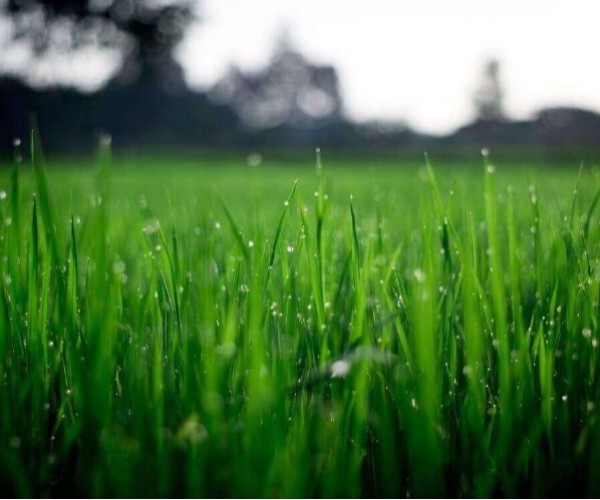- Turf
- Artificial
- Soil
- Timber
- Composite Decking
- Paving & Stone
Get In Touch With Our Experts Today!
Give us a Call! - Seed & Fertiliser
- Dressing
- Bark

September 22, 2023 Turf Tips
Whether it’s been a spell of wet weather or an unexpected summer shower, most of us have looked out at a lawn in need of mowing only to find the grass is still damp. So when is it okay to get the mower out, and how wet is too wet when it comes to cutting your grass? This is a question we get asked a lot here at George Davies Turf.
A perfectly presented lawn is the goal for many homeowners, but wet grass can make achieving that very tricky. Mowing while the lawn is still wet risks damaging the blades of grass, leading to an unhealthy, patchy lawn.
To keep your grass looking its best, it’s important to know when to wait for it to dry before getting the lawn mower out. Here’s our advice on mowing wet grass, how long to wait after rain, and how to tell when the lawn is dry enough.
If you can still see pools or puddles of water on the lawn, it’s definitely too wet to mow. Likewise, if you walk on the grass and water comes up around your feet, the moisture content is too high.
A good gauge is the ‘shoe test’ – press down on the grass with your boot or shoe, and if water pools up around the print, the lawn needs longer to dry out. If you mow when it’s this wet, you’ll end up with a muddy mess and grass clippings will stick together to form a wet mat on the lawn.
General guidance is to wait until your lawn is 95% dry before mowing. If the grass blades still feel damp or flexible, leave it a bit longer. The blades should feel dry and snap easily when bent.

When rain is forecast, try to cut your grass the day before if possible. This gives the lawn chance to dry out before the downpour arrives. If you’ve missed that window, the following drying times are recommended after different levels of rainfall:
– Light rain shower – Wait at least 2 hours before mowing
– Steady moderate rainfall – Wait 24 hours if possible
– Heavy downpour – Wait 48-72 hours for the lawn to fully dry
– Thunderstorms – Wait 3 to 4 days. Thunderstorms dump a huge volume of water.
These are just rough timeframes, and drying times vary based on weather conditions like sunshine, temperature, humidity and wind. Keep assessing the grass. When it’s dry to the touch, has a consistent green colour and the blades feel brittle, it’s good to mow.

Mowing wet grass can wreak havoc on your lawn for a few reasons:
– It rips rather than cuts. When wet, grass blades will tear and shred under the mower blades rather than cutting cleanly. This leads to damaged, frayed tips which turn brown.
– It compacts down the soil beneath. The weight of the mower on soggy ground compresses the soil, hampering root development and reducing air circulation.
– It spreads lawn diseases. Moisture on the grass blades transfers diseases rust fungus as you mow.
– It creates messy clumps. Wet clippings will clump together on the lawn surface or under the mower deck.
– It clogs up machinery, which can damage the equipment over time.
So, for the healthiest lawn and fully functioning mower, wait until the grass is no longer waterlogged before cutting it. Be patient after heavy rainfall and stick to mowing in dry weather conditions when possible.

Making note of when you last mowed and how the weather has been since is useful when deciding if the lawn is ready for cutting. Maintain your lawn mower well with regular servicing and blade sharpening too so it’s always up to the task of tackling your grass.
If you have any other lawn care queries, get in touch with us here at George Davies Turf. We’re turfing experts with over 20 years of experience in helping to create amazing looking lawns! If you are looking for a new lawn, be sure to get your quote here.

If you’re looking for advice on your turf, or to make an enquiry about a new lawn, contact our friendly team for professional advice.
CALL US NOW ON 01234 818 253